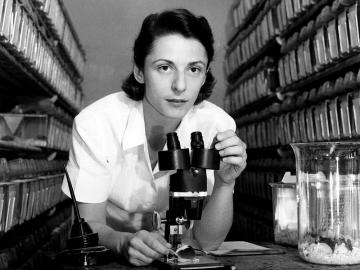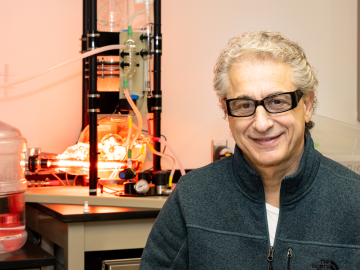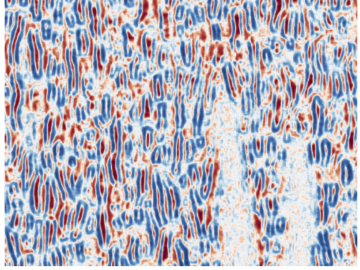Filter News
Area of Research
- Advanced Manufacturing (4)
- Biological Systems (1)
- Biology and Environment (3)
- Building Technologies (1)
- Clean Energy (44)
- Climate and Environmental Systems (2)
- Computational Engineering (1)
- Computer Science (7)
- Fusion Energy (4)
- Materials (27)
- National Security (3)
- Neutron Science (16)
- Nuclear Science and Technology (9)
- Quantum information Science (2)
- Supercomputing (18)
- Transportation Systems (1)
News Type
Date
News Topics
- 3-D Printing/Advanced Manufacturing (11)
- Advanced Reactors (6)
- Artificial Intelligence (9)
- Big Data (7)
- Bioenergy (4)
- Biomedical (3)
- Biotechnology (1)
- Clean Water (4)
- Composites (1)
- Computer Science (26)
- Cybersecurity (1)
- Energy Storage (7)
- Environment (14)
- Exascale Computing (1)
- Fusion (3)
- Grid (4)
- Machine Learning (4)
- Materials Science (10)
- Mercury (1)
- Microscopy (2)
- Molten Salt (1)
- Nanotechnology (3)
- Neutron Science (12)
- Nuclear Energy (14)
- Physics (3)
- Polymers (1)
- Quantum Science (5)
- Space Exploration (4)
- Summit (6)
- Sustainable Energy (3)
- Transportation (10)
Media Contacts

As scientists study approaches to best sustain a fusion reactor, a team led by Oak Ridge National Laboratory investigated injecting shattered argon pellets into a super-hot plasma, when needed, to protect the reactor’s interior wall from high-energy runaway electrons.

The life and legacy of Dr. Liane Russell – world-renowned for her groundbreaking genetics research in mice – will be celebrated during a symposium on December 20 beginning at 8:30 a.m. at Oak Ridge National Laboratory.

John Katsaras, a biophysicist specializing in neutron scattering and the study of biological membranes at the Department of Energy’s Oak Ridge National Laboratory, had a rather unusual birthday party last year.

Students often participate in internships and receive formal training in their chosen career fields during college, but some pursue professional development opportunities even earlier.

Electrons in atoms are pretty talented. They can form chemical bonds, get kicked out of the atom and even “jump” to different locations based on their energetic states.

Buildings use 40 percent of America’s primary energy and 75 percent of its electricity, which can jump to 80 percent when a majority of the population is at home using heating or cooling systems and the seasons reach their extremes.

Beyond solids, liquids, gases, plasma, and other examples only accessible under extreme conditions, scientists are constantly searching for other states of matter.

Scientists at the U.S. Department of Energy’s Brookhaven National Laboratory have new experimental evidence and a predictive theory that solves a long-standing materials science mystery: why certain crystalline materials shrink when heated.

Researchers at ORNL and the National Renewable Energy Laboratory took inspiration from flying insects to demonstrate a miniaturized gyroscope, a special sensor used in navigation technologies.

If humankind reaches Mars this century, an Oak Ridge National Laboratory-developed experiment testing advanced materials for spacecraft may play a key role.




